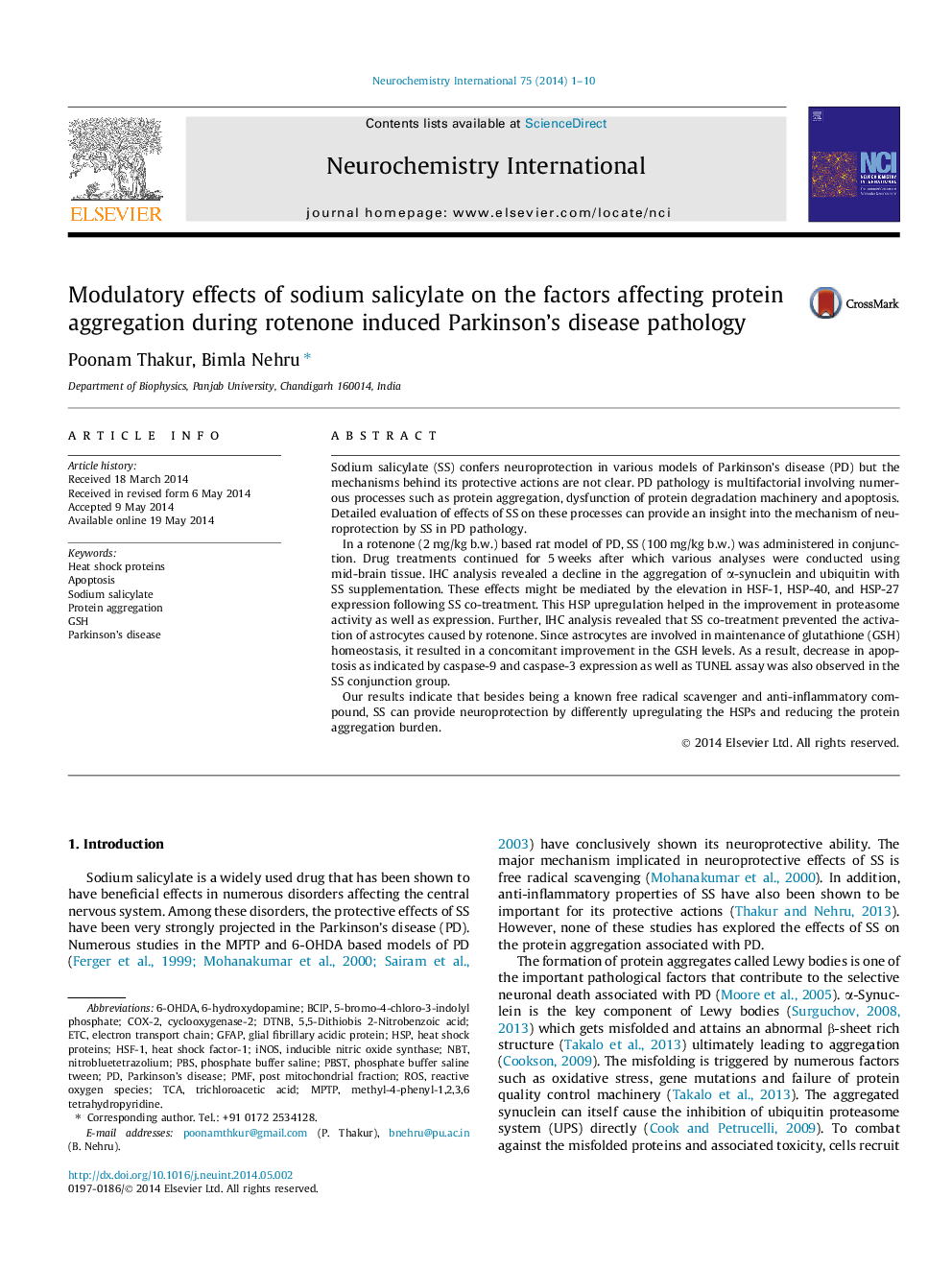| کد مقاله | کد نشریه | سال انتشار | مقاله انگلیسی | نسخه تمام متن |
|---|---|---|---|---|
| 2200498 | 1551298 | 2014 | 10 صفحه PDF | دانلود رایگان |
• Effect of sodium salicylate (SS) in rotenone induced proteotoxic stress was checked.
• SS induced HSF-1, HSP-40 and HSP-27 expression but not HSP-70 and HSP-90.
• Activity and expression of proteasome core was also improved.
• Consequently, aggregation and expression of α-synuclein and ubiquitin was reduced.
• Improvements in GSH and reduction of apoptosis by SS also conferred protection.
Sodium salicylate (SS) confers neuroprotection in various models of Parkinson’s disease (PD) but the mechanisms behind its protective actions are not clear. PD pathology is multifactorial involving numerous processes such as protein aggregation, dysfunction of protein degradation machinery and apoptosis. Detailed evaluation of effects of SS on these processes can provide an insight into the mechanism of neuroprotection by SS in PD pathology.In a rotenone (2 mg/kg b.w.) based rat model of PD, SS (100 mg/kg b.w.) was administered in conjunction. Drug treatments continued for 5 weeks after which various analyses were conducted using mid-brain tissue. IHC analysis revealed a decline in the aggregation of α-synuclein and ubiquitin with SS supplementation. These effects might be mediated by the elevation in HSF-1, HSP-40, and HSP-27 expression following SS co-treatment. This HSP upregulation helped in the improvement in proteasome activity as well as expression. Further, IHC analysis revealed that SS co-treatment prevented the activation of astrocytes caused by rotenone. Since astrocytes are involved in maintenance of glutathione (GSH) homeostasis, it resulted in a concomitant improvement in the GSH levels. As a result, decrease in apoptosis as indicated by caspase-9 and caspase-3 expression as well as TUNEL assay was also observed in the SS conjunction group.Our results indicate that besides being a known free radical scavenger and anti-inflammatory compound, SS can provide neuroprotection by differently upregulating the HSPs and reducing the protein aggregation burden.
Journal: Neurochemistry International - Volume 75, September 2014, Pages 1–10
